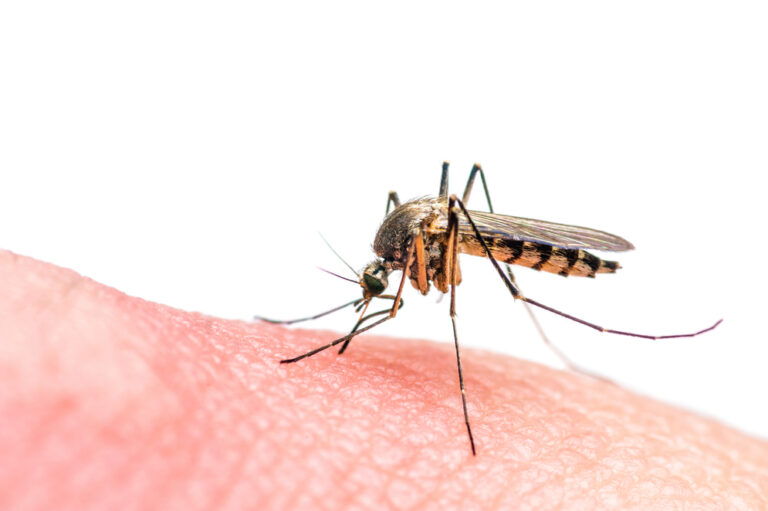
Tasty Foods You Can Eat Lots Of Without Gaining Fat
Whether you want to maintain your existing weight or just lose a few pounds before beach season, it does not necessarily have to be about eating less and starving yourself! This is because there are many foods out there you can eat in relatively big portions, that are actually a dieter or weight watcher’s best friend.

Foods that are high in fiber and high percentage of water content, but still low in kilo-calorie counts can be found in this list. And they’re yummy! These foods fill you up and can be eaten in good sized portions and variations. Hang it on your fridge door!
Pineapple
The king of fruits with a crown on his head. A pineapple symbolizes holiday and freedom. And not for nothing. The manganese content of pineapples is said to help your body and muscles to metabolize protein in your diet. This is very good for promoting weight control. Pineapples are also excellent sources of Vitamin C. Best to eat fresh. 100 grams or 3.5 ounces is about 50 kilo calories.

There are many things you can do with Pineapple such as shakes, pizza topping, grill, summer salads and even chicken. If you never thought off adding pineapple to your diet because someone once told you fruits are filled with sugar and you should watch out from them, now is the time to put this misconception in place.
Eggs
Not for nothing the back yard chickens trend is at peak adoption. People are willing to work hard for fresh eggs everyday. A boiled or poached egg is packed with protein that your body needs for energy and to feel satisfied. For weight management. Butter or cream not included ?

Eggs (boiled) supply several vitamins and minerals as significant amounts of the Daily Value, including vitamin A, riboflavin, pantothenic acid, vitamin B12, choline, phosphorus, zinc and vitamin D. Cooking methods affect the nutritional values of eggs. A yolk contains more than two-thirds of the recommended daily intake of 300 mg of cholesterol. One egg weighing 50 grams is about 80 kilo-calories.
Popcorn
When we say popcorn, we don’t mean the stuff you get at a concession stand at the state fair or the lobby of a movie theater. We mean natural, air popped popcorn. Air-popped popcorn is naturally high in dietary fiber and antioxidants, low in calories and fat, and free of sugar and sodium. This can make it an attractive snack to people with dietary restrictions on the intake of calories, fat or sodium.

For the sake of flavor, however, large amounts of fat, sugar, and sodium are often added to prepared popcorn, which can quickly convert it to a very poor choice for those on restricted diets. One cup (around 8 grams) popped without any added fats, salt or sugar is approximately 45 kilo-calories.
Eggplant
Eggplant or aubergine is another veggie that is high in fiber and water content, but low in kilo-calories. Always cook it first by baking or grilled with little or no added oils as it has bitter small pits. The plant species is believed to have originated in India, where it continues to grow wild.[ It has been cultivated in southern and eastern Asia since prehistory.
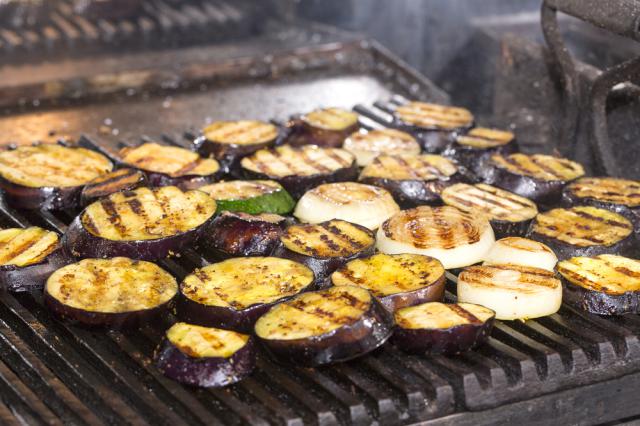
The first known written record of the plant is found in Qimin Yaoshu, an ancient Chinese agricultural treatise completed in 544. Great addition to any salad, sandwich or main course. 100 grams or 3.5 ounces of eggplant is about 25 kilo-calories.
Avocados
Avocados are a unique fruit in the sense that they contain tremendous levels of healthy fats. The undisputed 2018 Instagram star is particularly high in monounsaturated polemic acid, the same type of fat found in olive oil. Despite containing fat, avocados also contain high volume of water and fiber, making them less energy-dense than you previously imagined.
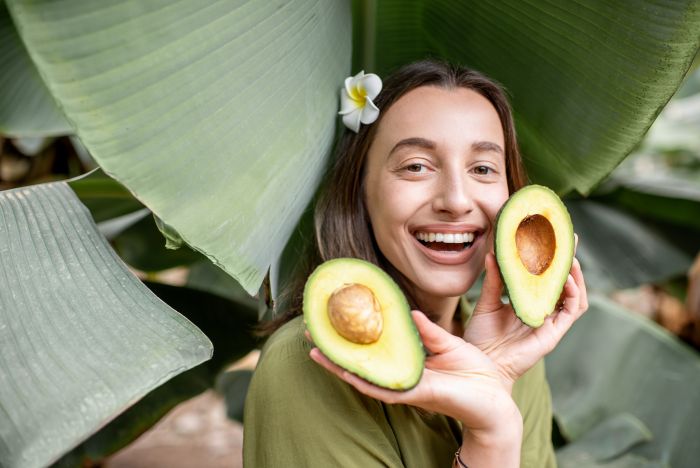
What’s more, they’re a perfect addition to vegetable salads, as studies show that their fat content can increase carotenoid antioxidant absorption from the vegetables. Great also in dips, spreads, grilled and even in smoothies. They also contain many important nutrients, including potassium. The pits also has many benefits but that’s for another time.
Pears
Known as a nutrient-dense food, a pear (about 166 grams) contains only 100 calories, and is fat free (!!). There more than 3,000 variety of pears grown around the world and people use them to make everything from salads to chicken to tasty desserts. High on fiber, it prevents constipation and promotes regularity for a healthy digestive tract.

Pears contain high levels of antioxidants, including vitamin C and K, and copper. China today produces the most pears in the world followed by Europe, with the United States coming in as the third largest producer. Some pears actually grow up inside bottles on the tree so it can be used for liquors later on.
Fish
In general, it is known you can’t go wrong when you choose fish. Many refrains from ordering the fish in restaurants fearing they will be left hungry by the end of it but it’s actually the opposite. Fish are rich in omega-3 fatty acids and they are also loaded with high-quality protein, which is known to be very filling.

In fact, fish scores higher than all other protein-rich foods on the satiety index and ranks second of all foods tested (Chicken or beef to list some) Another study found participants who ate fish consumed 11% fewer calories at their next meal than those who ate beef. Enough facts to convince you? It’s yummy as well.
Cold / Hot Brew Coffee
Ok Ok Settle down before running to Starbucks, we are not talking about your pumpkin latte. Coffee in his pure brew form has many benefits like antioxidants and nutrients that can improve general health. Legends tell it was discovered around 800 A.D. when sheep herders noticed the effect the plant has on their sheep.

Third of the world’s coffee is grown in Brazil today and in the U.S. they grow in Hawaii and California. It helps us through the mornings and work days. But brew coffee has practically no calories in it. Just take into account sugar and milk added. Enjoy your cold brew!
Oatmeal
Oatmeal is a type of porridge, or hot cereal, that is often consumed for breakfast and used by many athletes and nutritionists in their diet. It’s incredibly filling and ranks 3rd on the satiety index This is due to its high fiber content and ability to absorb water. Some parents add it to their babies’ food to make them sleep better.

Oats are a good source of a soluble fiber called beta-glucan, which helps slow down digestion and the absorption of carbs. Eat it in the morning to give you much-needed energy that you would otherwise find in salty snacks during the midday. It most likely keep you strong until lunch. And it’s latterly the easiest dish to make anywhere.
Cabbage
Every time I need a quick salad or to add some color to a dining table I chop cabbage real quick, a bit of dice and cut – spice and serve. So it’s really easy to use as an ingredient and is the star of many oriental kitchens. Raw or cooked It’s very low in calories and contains only 22 calories per cup.

And it will look so good on pictures! Healthy fact: Cabbage contains a high amount of Vitamin C. which helps your body to cut out toxins, prevent various skin (dermatology) diseases and rheumatism. If you have Vitamin C in mind you should think about red cabbage. It has double of Vitamin C then the regular green cabbage.
Blueberries
My personal favorite fruit by far so know you better take some before I get there and eat them all! Another desert oriented food who got a sweet reputation for nothing. First, they claim to fame is their incredible antioxidant content. The fruit has more antioxidants than any other fruit.
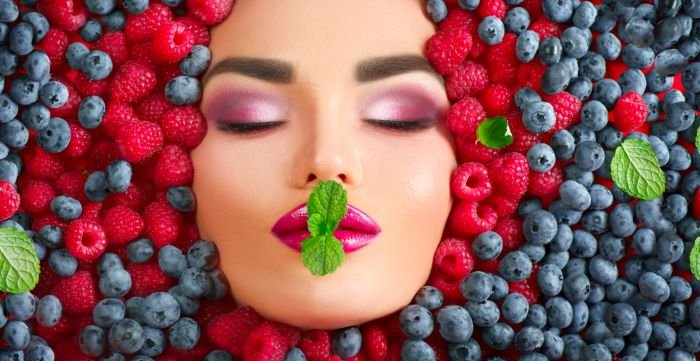
Although the antioxidant content of blueberries is what skyrocketed them to popularity, it’s really an overall healthy fruit that you can binge on and for all the fiber a cup of blueberries packs — 14% of your recommended daily value — it only has around 85 calories. No wonder people been eating blueberries for the past 13,000 years and is surprisingly native to North American.
Beetroot
Usually the deep purple roots of beetroot are eaten boiled, roasted, or raw, and either alone or combined with any salad vegetable (just add lemon and olive oil). A large proportion of the commercial production is processed into boiled and sterilized beets or into pickles. In Eastern Europe, beet soup, such as borscht, is a popular dish. In Indian cuisine, chopped, cooked, spiced beet is a common side dish.

Besides being a very hard stain to get rid of, Beetroot is high in minerals, nutrients and water content. So it works great as a juice as well. Beets are also good sources of manganese and magnesium. These help with the regulation of your blood sugars, and muscle and nerve function. Raw beetroot is 88% water, 10% carbohydrates, 2% protein, and less than 1% fat. A 100 gram, or 3.5 ounce, serving of beets is around 40 kilocalories.
Salmon
It is no surprise bears work so hard on catching fresh salmon whenever they can. Fatty fish like Salmon is incredibly healthy and very satisfying, keeping you full for many hours with relatively low count of calories. Salmon is loaded with high-quality protein, healthy fats and various important nutrients.

Salmon is also loaded with omega-3 fatty acids, which have been shown to help, among others, to reduce inflammation, which is known to promote obesity and metabolic disease. Fish, and seafood in general, may also supply a significant amount of iodine which is necessary for proper thyroid function, which is important to keep your metabolism running optimally. And most important, it’s so easy to make fresh and tasty.
Legumes
Legumes like peas and lentils are rich in protein and fiber – the two most stomach-filling nutrients. Their calorie content is also relatively low compared to the quantity you can eat in one sitting. Yes, because they’re so filling. Several studies found that beans, peas, chickpeas and lentils are even 31% more filling than pasta and bread.

Did you think quinoa is packed with protein? lentils actually contain twice the amount of protein per serving than quinoa. And black beans are full of much needed iron. See? You should really explore the whole Legumes family tree. This, combined with a relatively low energy density, makes them a food that is worth not skipping next time.
Coconut Oil
For some it sounds weird but not all fats are created equal. Coconut oil isn’t exactly an ingredient that you would want to eat by the spoonful straight from the jar, but it’s possible to do it and not gain significant poundage. The main active component in the aromatic oil are fatty acids that boost the metabolism to burn fat much more efficiently. Coconut oil is high in fatty acids of a medium length, called medium-chain triglycerides (MCTs). These fatty acids have been shown to boost satiety better than other fats and increase the number of calories burned.

What’s more, two studies — one in women and the other in men — showed that coconut oil reduced retention of belly fat. It’s not about adding coconut oil to your diet on top of everything else but rather replacing some of your other cooking fats like vegetable oil or butter with coconut oil.
Asparagus
This green delight doesn’t just go well with steak, it’s actually incredibly healthy for you, and if cooked properly, can be quite delicious. In the wild, Asparagus grows in green, purple and white. The purple Asparagus is extremely healthy due to it’s high levels of anthocyanins which can help prevent heart diseases.

If you cook one cup of Asparagus, it will contain only 30 calories and will boost up your Vitamin K and folate levels. If you don’t know like regular plain Asparagus, why not add it as a pizza topping, or just mix it in as a salad with some peas and a fresh feta-mint dressing? There are tons of recipes for asparagus that actually do it justice, so don’t be afraid to try some of them out.
Carrots
Carrots are not only delicious and go well with hundreds of recipes, they are also a great source of vitamin K1, beta carotene, potassium, fiber and antioxidants. 100 grams of carrots have roughly 41 calories, 4.7 grams of sugar and 2.8 grams of fiber. If you are looking for an easy midday snack, or an added vegetable to any recipe, carrots are the perfect solutions.

Now to the main question: Are carrots really good for your eyesight? The answer is YES! If you suffer from low levels of vitamin A, you are likely to experience night blindness. The solution is to raise your vitamin A levels by eating carrots! Carrots can also help prevent Cancer and heart disease, so overall, just eat your carrots, they’re healthy and extremely delicious.
Citrus Fruits
Despite being high in sugar, citrus fruits, such as oranges, mandarins, tangelos, tangerines, and grapefruit are high in Vitamin C and flavonoids. They are much recommended for your liver’s health. Also, for your skin and in addition it helps digestion and weight control. A 100 grams or 3.5 ounces orange of is around 45 kilo-calories.

Better consume fresh after peeling and better eat it than squeeze and drink it. You can also use the peal of some citrus fruits in many ways from making tea to cleaning solutions. Many nutritionists recommend start each day with a glass of water with squeezed lemon juice which may help weight loss and control and cause a smoother digestion system.
Kale
Confession time – I don’t like it. Tried it a couple of times and it’s not my kind of salad bowl. But, and it’s a big but, I know many chefs and nutritionists who swear on it. First, Kale is light in calories — one cup of raw kale only has about 33 calories — but it contains close to three grams of protein and 2.5 grams of fiber per serving. Awesome.

Second, It’s one of the relatively few foods that contains an omega-three fatty acid, a nutrient that most people rely on fish to get but for example vegans can get from Kale. There’s a reason New Yorkers love it so much. Like other kinds of lettuce, kale is also high in vitamins and folate.
Miso Soup
Yours truly spent some time in Japan and started each day with a bowl of Miso Soup for breakfast. I must say it is incredible. Miso soup is typically very low in calories, making it an excellent choice for any meal. In its most basic form, a 1-cup serving of Miso soup contains just 35 calories.

Miso is rich in essential minerals and a good source of various B vitamins, vitamins E, K and folic acid. As a fermented food, Miso provides the gut germs with beneficial bacteria that help us to stay healthy. No wonder it is an integral part of any meal by one of the skinniest and healthiest people in the world.
Apples
The body needs sugar to operate, but when dieting, forget the fizzy colas and sweet snacks. Apples should be an integral part of your diet plan since their soluble fiber and low-calorie content will enhance your weight loss in the long run.

It is not a surprise the distance one falls from the apple tree is a poetic quality measurement. One average apple, weighing 100 grams or 3.5 ounces, is around 50 kilocalories. I personally eat one every day. What is your favorite apple color?
Nuts
Despite being high in fat, nuts are not as fattening as some would expect. Actually, they’re an excellent snack, in moderation, containing balanced amounts of protein, fiber and healthy fats. Studies have shown that eating nuts can improve metabolic health and even promote weight loss when combined with the right program.

Population studies have shown positive correlation between eating nuts and a healthier and leaner body than those who don’t eat them altogether. In addition it showed nuts eaters tend to live longer and suffer less from kinds of cancer. Nuts are still pretty high on calories so make sure to control your portions. If you can’t help yourself it might be best to avoid them.
Soba Noodles
While unknown to most households in America, Soba noodles are one of the fastest growing foods in the world. Made from 100% Buckwheat flour, Soba noodles are low in calories, high on nutritions and extremely tasty. A cup of Soba noodles has just under 110 calories, over 0.4 milligrams of minerals, 6 grams of protein and lots of vitamin B1.

Soba noodles are also gluten free, so if you are on a strict diet, you can still enjoy them. Most people would think to cook Soba noodles with chicken or beef, but they could also be added to soups, salads, and even mixed with tofu. No matter what combination you like, be sure to try them out. They go especially well with an assortment of vegetables.
Melons
Originated from Africa and a close relative of the Squash and Cucumber, melons have been popular from the ancient world to today as a super healthy, refreshing and hydrating fruit. Besides of being an Instagram star every summer, Melons are around 90 percent water, and pretty much fat-free. Melons of all varieties help with detoxification and getting rid of excess fluids in your body.

A 100-gram serve or about 3.5 ounces of watermelon contains around 30 kilo calories. There are countless cool serving suggestions for melons to any purpose or need. No matter how you choose to serve it just remember to eat it cold and take a picture.
Algae
Yes by algae we mean seaweed. As these water lettuces floating around and grow on corals and rocks. Many cultures worldwide, going back to ancient times, have always known about the benefits of eating algae and adding it to daily menu. Naturally growing seaweeds are an important source of food, especially in Asia. They provide many vitamins including: A, B1, B2, B6, niacin, and C, and are rich in iodine, potassium, iron, magnesium, and calcium.

Commercially cultivated algae are marketed as nutritional supplements. Algae are national foods of many nations: China consumes more than 70 species, Japan, over 20 species, also Ireland, Chile, Wales, Korea and many more.
Red Berries
Red berries like strawberries, cranberries, and raspberries are full of fiber, Vitamin C, and antioxidants. No wonder all these models and athletes eat them by the dozens. These nutrients help with having a healthy heart, and digestive system. Strawberries are also said to help control blood sugar levels.

Despite known as a dessert, these are considered by many to be the ultimate low-calorie diet friends. 100 grams of strawberries, or 3.5 ounces, is about 30 kilocalories. Fun fact: Got a headache? Have a strawberry – Strawberries contain natural salicylates, an ingredient found in aspirin. So next time you have a headache and cannot find a pharmacy, go buy a bag of strawberries.
Rice Cakes
If you are looking for a quick snack, a healthy breakfast or even a late night treat, look no further than rice cakes. These puffy, crunchy and tasty cakes are the perfect solution for when you want something light but filling. Enjoy them with cheese, cream cheese, chocolate or even plain, rice cakes are always great. With 35 calories per cake, these little circles of heaven are the perfect guilt free treat for you.

They are made from whole grains which are filled with fibers, and have energizing carbohydrates. Little known trick: you can cut them down to tiny bits and add them to any salad you’d like. They will add a little crunchy delight and won’t overpower the natural flavors of the salad.
Papaya
This incredible food grows in tropical climates and is as delicious as it looks. The orange fruit with the small black seeds might resemble a melon, but it is far more healthy than it’s green relative. Papayas are a great source of antioxidants and can help prevent Asthma, bone diseases and prostate cancer.

But that’s not all! Ancient healers used papayas to heal open wounds, and prevent infection on burned skin victims and kids suffering from scrapes and bruises. Today, science has embraced the food, as there are a variety of ointments that contain vitamins from papayas. In short, next time you feel a craving for something sweet and healthy, grab a papaya. It’s delicious, and guilt free with only 120 calories!
Celery
Talking about getting a bad rep for nothing. The crunch of celery sticks will help your body flush itself of toxins. This is because, Almost 95% of celery is water, but that doesn’t mean the vegetable doesn’t have significant health benefits. Celery is used in weight loss diets, where it provides low-calorie dietary fiber bulk. Celery is often incorrectly thought to be a “negative-calorie food”, the digestion of which burns more calories than the body can obtain. In fact, celery provides positive net calories, with digestion consuming only a small proportion of the calories taken in.

The dietary fiber content helps your digestion, while the other vitamins and minerals contribute to a healthy body. 100 grams or 3.5 ounces of celery is about 15 kilocalories. You’re best off eating celery when it’s fresh, though. The vegetable loses many of its antioxidants within five to seven days of being purchased.
Vegetable Soup
Honestly, we don’t care what season it is, if we’re sick or healthy, or even if it’s morning or evening, we’re always in the mood for a good vegetable soup, preferably with a tablespoon of noodles. With only 59 calories for 3⁄4 cup, vegetable soup is one of the healthiest and most nutritious foods you can have, no wonder we eat it when we’re sick.

The natural minerals and vitamins that are added from the vegetables are getting into your body and provide a healthy restart to your whole system. Don’t settle for a simple potato/carrot/onion soup. Add all the vegetables you like, and most importantly, herbs such as Dill, Parsley, celery and garlic for that added goodness. Sounds delicious already.
Edamame
Do you know that moment in the evening where it’s half past nine pm, you are tired from working all day, the kids are sleeping and all you want to do is lay down on the sofa, watch your favorite television show and just eat, eat, eat?

Well, we’ve got the solution for you. Edamame is the perfect food for night time binge watching. With only 63 calories for 2⁄3 cup, it is high on proteins, low on fat, and extremely delicious, especially with a little salt sprinkled on top. Basically, all you have to do is just boil the Edamame in hot water for a few minutes, let it cool down and sprinkle some salt. That’s it! That’s the recipe!
Salsa
Fresh homemade salsa is one of those magical foods that go well with every meal you have planned and is always the first to be finished and added for second serving. Homemade salsa has just about 30 calories for 7 tablespoons, 7 grams of carbs and zero fat.

Of course that can change with the specific recipe you work off of, but mostly, it will stay a healthy dip that will be preferable to any store bought dip. Eat with tortilla chips, burritos, taquitos, rice or even french fried. If you want, you can even eat it with Edamame or ricke cakes. They sky’s the limit when it comes to homemade salsa, so forget about those store bought salsas and go make your own. Trust us, you wont regret it.
Cantaloupe
Cantaloupe has more beta carotene — a form of vitamin A that promotes healthy eyes — than many other similar fruits like oranges, grapefruits, peaches, and mangoes. Just one cup of the fruit provides you with potassium as well as more than 100% of your daily recommended value of vitamins A and C.

Plus, since water makes up 90% of cantaloupe, there are only 55 calories in one serving. It’s a great addition to any smoothie and goes well with either cottage cheese or prosciutto as a snack. Fun fact: The Cantaloupe name comes from the town of Cantaloupe in Italy, where cantaloupe seeds landed from Armenia and grown in the Papal Gardens in the 16th century.
Scallops
Feeling like treating yourself to a healthy and extremely satisfying dinner? Why not cook some Scallops? A portion of 5 large scallops has just about 90 calories, 17 grams of protein, and 0.9 grams of fat.

Most people don’t know that scallops are an excellent source for several trace minerals such as selenium, copper and zinc. Adding scallops to your weekly diet will prove to be helpful fairly quickly, and may aid in weight loss. According to researchers, people who are on a high protein diet are more likely to lose up to 5% of their weight compared to people who are on a low-protein diet. Scallops with a nice accompanied sauce and a side salad sounds delicious right about now, right?
Chia Seeds
Chia seeds has long to be known as among the most nutritious foods on the planet and has been part of central American natives’ diet for centuries. They belong to the group of superfoods with the highest nutrition content. For every ounce of the seeds, you get 11 grams of fiber, so there’s little doubt that a small bowl will keep you full for long periods.
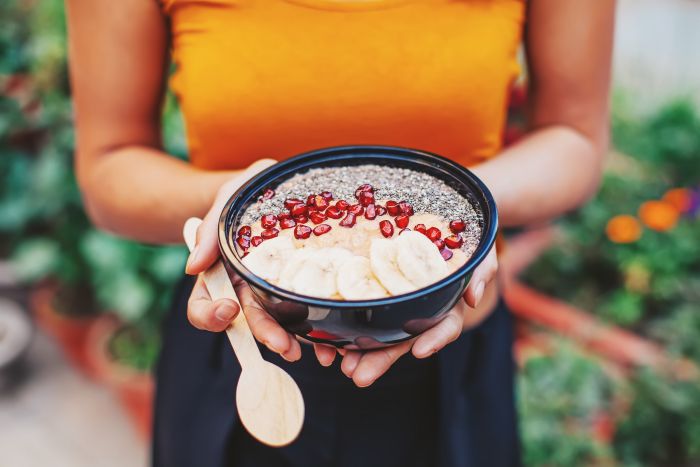
This makes chia seeds a low-carb-friendly food and one of the best sources of fiber in the world. Because of its high fiber content, chia seeds can absorb up to 11–12 times their weight in water, turning gel-like and ideal for deserts and smoothies.
Brown rice
Everybody loves rice. Just ask any Asian chef how even plain rice can complete the most complicated dishes into perfection. Brown rice is a heartier, fiber-packed alternative to the common white rice we know. Want to burn fat while eating? A half-cup serving contains 1.7 grams of Resistant Starch, a healthy carb that boosts metabolism and burns fat.

We know the word “brown” is thrown a lot in the health industry like in brown sugar, but I assure you when it comes to rice, brown is actually better than white rice. Brown rice is a low-energy-density food, meaning it is heavy and filling but low in calories.100 grams of brown rice contains about 111 calories.
Greek Yogurt
While most people who eat yogurt feel like it’s a healthy alternative to a chocolate snack, the opposite can be true. Most regular yogurt snacks are filled with sugar and various toppings that are just not good for you. If you want to enjoy a truly healthy snack with just about 100 calories, 0 grams of fat and 12 grams of carbs, try regular Greek yogurt.

A nice portion of three and a half ounces of Greek yogurt can be an excellent source of protein, zinc, vitamin B6, potassium and calcium. According to dieticians, Greek yogurt is great if you are on a diet because it’s low on calories and actually keeps you full for longer periods of time, unlike regular sweet yogurt.
Bonus: 30 Foods That Boost the Immune System – Dark chocolate
Our natural immune system is what keeps us from being constantly sick while we go about in the world. It what helps us get better and fight illness when it comes. Incorporating specific foods into the diet may strengthen a person’s immune response. Are you like me and constantly looking for an excuse to eat more chocolate? Chocolate is called Dark or black when it contains cocoa solids, cocoa butter, without the milk and sugar found in milk chocolate. Dark chocolate contains an antioxidant called theobromine, which may help to boost the immune system by protecting the body’s cells from free radicals.

Free radicals are molecules that the body produces when it breaks down food or comes into contact with pollutants. Free radicals can damage the body’s cells and may contribute to disease. But remember, dark chocolate contains lots of calories and saturated fat, so it is important to approach it in moderation.
Turmeric
Turmeric is a yellow spice that many people use in cooking (it is what gives curry its yellow color). But it is also used in some alternative medicines. Consuming turmeric may improve a person’s immune response due to the qualities of curcumin, a compound in turmeric (This same compound is what lends turmeric its signature vibrant orange-yellow color). In traditional Chinese medicine, turmeric is used as an anti-inflammatory.

According to a study published in the Journal of Clinical Immunology, curcumin activates the production of T-cells, which are the main cells fighting for your health in your immune system. It’s also known to reduce LDL cholesterol and to enhance cognitive abilities.
Oily fish
Today people eat just one-third of a portion instead of the recommended one portion per week of oily fish. These fish are a great source of long chained omega 3 fats which are an essential part of our diet. Just to mention a few oily fish; Salmon, tuna, pilchards, and other oily fish are a rich source of omega-3 fatty acids.

It is recommended to maintain a balanced diet than to take the omega 3 supplements you find in pharmacies. According to a 2014 report, long-term intake of omega-3 fatty acids may reduce the risk of rheumatoid arthritis (RA). RA is a chronic autoimmune condition that occurs when the immune system mistakenly attacks a healthy part of the body.
Broccoli
For the past 2000 years parents been fighting with their children to eat more broccoli. Why? Because everyone knows broccoli is good for you. It even looks like a small tree. Broccoli is a great source of the famous vitamin C. It also contains potent antioxidants, such as sulforaphane.

Broccoli and other cruciferous vegetables were proven to help boost immunity, according to the study. Researchers claim that sulforaphane turns on antioxidant genes and enzymes in specific immune cells, which combat free radicals in your body and prevent you from getting sick. To keep its nutrients, it’s best to steam it, steer-fry it. Any other method results in 30% loss of nutrients.
Sweet potatoes
Many people confuse yam and sweet potato. Yam is a starchy root and sweet potatoes are fleshy and varies in color from white to orange to purple even. It is not a potato either and as such should not be used as substitutes in cooking. Sweet potatoes are rich in beta carotene, a type of antioxidant that gives the skin of the potatoes its orange color.

Beta carotene is a source of vitamin A. It helps to make skin healthy and may also help against skin damage from ultraviolet (UV) rays. Do not store sweet potatoes in the refrigerator rather than store it in a cool, dry place like the basement.
Spinach
Popeye knew what he was doing. Spinach may boost the immune system, as it contains many essential nutrients and antioxidants, including flavonoids, carotenoids, vitamin C and vitamin E. Vitamins C and E can help support the immune system. Other health benefits include helping eye health, cancer prevention, and reduced levels in blood pressure.

It is even said to prevent some hair loss thanks to its high concentration of iron. It’s best to eat spinach as fresh as possible as it loses nutrients with each passing day until 8 days after harvest. When fresh its leaves are crisp to bite. Raw spinach is also 91% water so it can be consumed in large quantities with no fear of weight gain. Win-win.
Ginger
When it comes to treating a common cold, ginger is one of the best foods for relief. People use ginger in a variety of dishes and desserts, as well as in teas. According to a review, ginger has anti-inflammatory and antioxidative properties and is likely to offer health benefits. Chinese healers and practitioners have used ginger for at least 3,000 years thanks to its medicinal relief properties.

They have also used the ginger as a “carrier” herb, one that helps other herbs to be more effective in the body. Among the health benefits attributed: reduce hypertension, inflammation, DNA breakage, nausea, migraines, and amyloid beta build-up, which is involved in Alzheimer’s disease.
Garlic
For most garlic is what mostly prevents other people come near them. Garlic has built a reputation for being one of the best cold-curing foods, and for a good reason. Garlic is used as a common home remedy for the prevention of colds and other illness. One review looked at whether taking garlic supplements containing allicin reduced the risk of getting a cold.

The placebo group had more than double the number of colds between them than those taking the garlic supplements. However, the researchers concluded that more research is necessary to determine whether or not garlic can help to prevent colds. It is also loaded with many vital minerals and vitamins such as potassium, iron, calcium, magnesium, manganese, zinc, selenium, beta-carotene, zeaxanthin, and Vitamin C.
Green tea
Only 30% of tea consumed around the world is green tea despite it being the least processed kind of tea. Green tea contains only a small amount of caffeine, so people can enjoy it as an alternative to black tea or coffee. Besides help you relax after a long day, drinking it may also strengthen the immune system.

It contains flavonoids, an antioxidant that boosts immunity, and it has anti-inflammatory properties. A study states that the antioxidant catechin, which is heavily prevalent in green tea, is known to be a powerful antibacterial and antiviral and can kill off cold-starting bacteria and the influenza virus. It is also said it helps to improve and maintain one’s cognitive function.
Kefir
Coming from the mountains of eastern Europe and made out of a culture created using a base of animal milk, soybean milk, coconut milk, fruit juices, sugar and molasses solutions. Kefir is a fermented drink that contains live cultures of bacteria that are beneficial for health. It is know to carry a heavy weight of probiotics micro-organisms. This improves digestion and helps the body to fight bacteria.
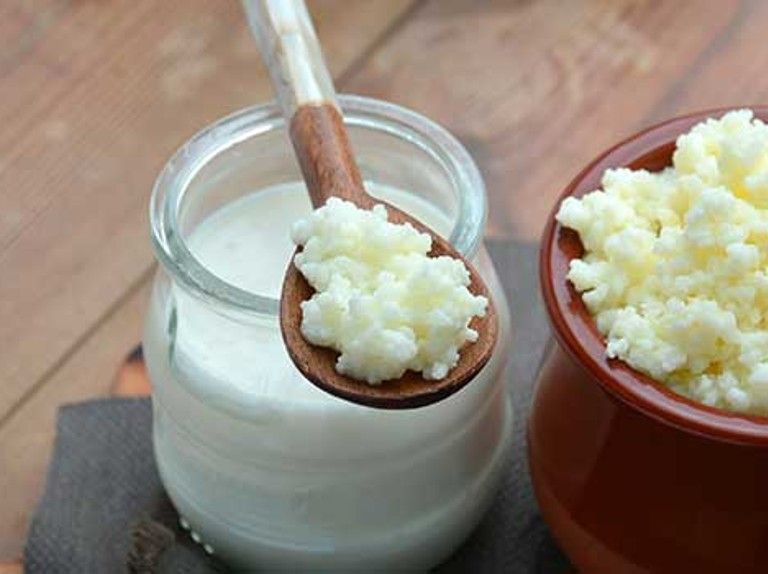
Initial research suggests that drinking kefir may boost the immune system. According to a 2017 review, various studies have shown that regular consumption of kefir can help with fighting bacteria, reducing inflammation and increasing antioxidant activity. The majority of the research that supports this was carried out on animals or in a laboratory. Researchers need to perform additional studies to understand how kefir may prevent disease in humans.
Sunflower seeds
Vincent Van Gogh loved Sunflowers for a reason and it’s not just their majestic appearance. Sunflower seeds can make a tasty addition to salads or breakfast bowls. They are actually the fruits of the sunflower plant who is made of thousands of little flowers. They are a rich source of vitamin E and Selenium, both strong antioxidants.

These function to protect the body cells from free radicals damage, which plays a role in several chronic diseases. Sunflower seeds may also help lower blood pressure, cholesterol and blood sugar levels as they contain magnesium, protein, linoleic fatty acids and several vital plant compounds. Did you know the sunflower plant in native to North America?
Almonds
Almonds were among the first cultivated crop starting 10,000 years ago. Almonds are another excellent source of vitamin E. They also contain manganese, magnesium, and fiber. Among the health benefits almonds offer are a relief from constipation, respiratory disorders, coughs, heart disorders, anemia, impotency, and diabetes.

They are also known to help maintaining a healthy hair, skin care and dental care. A surprise considering 40% of the world’s total amount of almond are actually used by chocolate and other candy makers. A small handful or a quarter of a cup of almonds is a healthful snack that may benefit the immune system and a good daily habit. By the way, almonds rely 100% on bees for pollination so no bees – no almonds.
Oranges or kiwifruit (kiwis)
Oranges and kiwis are an excellent source of vitamin C, which is the vitamin that many people turn to when they feel a cold developing. The both relatively low on calories with a low glycemic index and very high on nutrients and vitamins. While scientists are still not sure exactly how it helps, vitamin C may reduce the duration of common cold symptoms and improve the function of the human immune system.

More amazing facts about kiwis; it can help protect your DNA from oxygen related damage and they are highly recommended for people dealing with asthma thanks to the high levels of vitamin C who helps the respiratory system.
Red bell pepper
For people trying to avoid the sugar in fruit, red bell peppers are an excellent alternative source of vitamin C. They have twice the Vitamin C than citrus frits and this is a boost of anti-oxidants to the body. They can be found in a variety of colors from red, yellow and green. The time the spent on the plant and their ripeness determines the color.

As they ripe and become red, they grow in nutrients as well. Red peppers have twice the vitamin C than green ones. They are also a great source of Vitamin A. Traditional Chinese Medicine used bell peppers for treating some conditions like poor blood circulation, various indigestion problems, loss of appetite, swelling, frostbite and digestive issues.
Chicken Noodle Soup
Just ask any grandmother and she will tell you Chicken soup is the key for surviving cold and flu season, and not just because the warm comfort food feel to it. According to a study conducted by the University of California Los Angeles, this soup has some anti-inflammatory properties and can calms down inflammation in the upper respiratory tract that takes place when you catch a cold. The study also noted that the soup helps relieve nasal congestion.

Basically, it’s all about the whole being bigger than its parts – chicken noodle soup includes chicken broth, root vegetables (that are full of vitamins A and C and other antioxidants), chicken (protein) and noodles (carbs). In the bowl, vitamins, minerals and antioxidants come together and give chicken noodle soup it’s power to support a strong immune system.
Water
Let’s start at the basics, waster is the most important thing for your body. If you don’t get enough of it all the previous advice is in vain. It is said clean drinking water can clear a third of all occupied hospital beds in the world and 80% of illness in the developing world is related to water. When you’re feeling sick, a good portion of water can be one of the most helpful things you can sip on.

According to The Mayo Clinic, staying hydrated can help loosen trapped mucus. Try drinking at least the recommended 8 glasses of water a day to keep yourself fully hydrated, as we tend to lose more fluids when we’re sick.
Ginseng Tea
Ginseng tea is popular for more reasons than its delicious taste. Namely, the tea has been used as a treatment for upper respiratory tract infections (a.k.a. the common cold). A review published in the Canadian Medical Association Journal noted that ginseng has been shown to significantly reduce the symptoms of colds and influenza. However, the researchers noted that more research needs to be conducted to support ginseng’s immunity-boosting claims fully.

Traditional Chinese medicine men have used this fleshy root to slow age, enhance cognitive functions and improve general health and body vitality for centuries. 2 most popular types of Ginseng are the Chinese and American. It is also referred by many as boost to ones sexual performance.
Tomatoes
Maybe it’s time to start growing your own vegetables garden. Tomatoes are great to eat when feeling sick due to their high concentration of vitamin C. Just one medium tomato contains more than 16 milligrams of vitamin C, which is a proven fuel to your body’s immune system.

In a German study vitamin C was shown to be a vital part of the strength of the body’s phagocytes and t-cells, two key components of the body’s immune system. The researchers also noted that a deficiency in this nutrient can lead to a weaker immune system and lower resistance to certain pathogens that can lead to illness. Men know this – Tomatoes are the richest source of lycopene which is vital for the health of the male prostate.
Extra Virgin Olive Oil
The difference between Extra Virgin Olive Oil and regular “pure” olive oil is in the extraction process. In Extra Virgin Olive Oil they extract it with cold press with no added heat so the oil retains his original characteristics and nutrients. But in compare to pure olive oil it has a lower smoking point which makes it a hard choice for cooking.
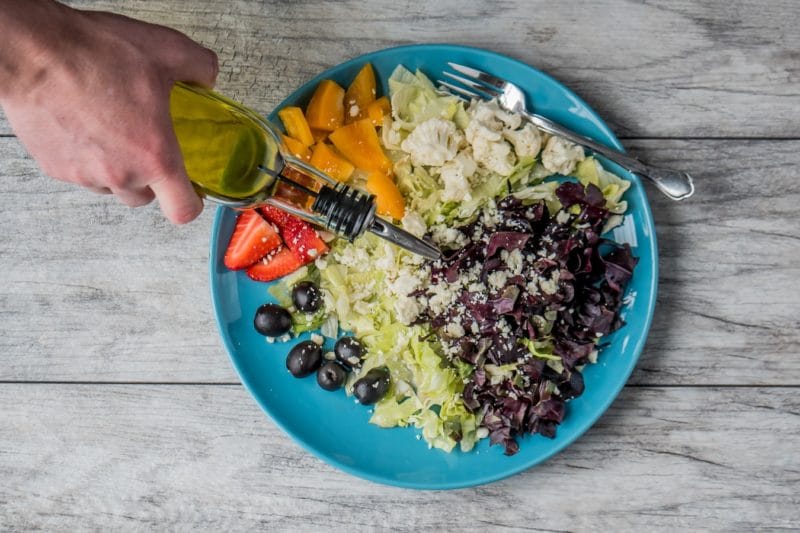
This oil has been shown to help rebuild and boost the body’s immunity. A study published in the British Journal of Nutrition found that olive oil’s high content of polyunsaturated fatty acids act as an anti-inflammatory agent in the body. The acids also assisted in boosting the immune system and guarding the body of infection.
Whole Grain Bread
Most people talk about eating bread as if they are confessing a sin or a vice. But this is not the case always and not the whole truth for that matter. It can be a great way to eat the recommended daily dose of whole grains. Whole grains are unrefined grains that contain the germ, bran and endosperm, while refined grains contain only the endosperm.

According to a study published by The American Journal of Clinical Nutrition, whole grains are known to have some anti-inflammatory properties, which allows for an increase in production of healthy bacteria. 70% of your immune system lives in your gut and intestine, so, it’s important to keep it healthy if you want to fend off any disease-causing germs.
Eggs
Eggs, and especially eggs’ yolks (the yellow stuff), are full with immunity-boosting nutrients. Eggs contain a high amount of vitamin D, which is vital in regulating and strengthening our immunity system. According to a study published by JAMA journal, participants who took a daily serving of vitamin D in the wintertime were less likely to catch a cold or any other upper respiratory tract infection in comparison to those who did not take it.

Eggs also contain protein in the highest quality available. It’s also great for your diet as it is low on fat and calories (70 calories per egg). By the way, an eggs’ shell color has nothing to do with it’s nutritional qualities.
Rosemary
Rosemary isn’t just a tasty herb to add to baked goods. You can find growing wild and evergreen in many places and is very easy to grow your own at home. It’s also an amazing anti-inflammatory and is a rich source of antioxidants. Researches noted that rosemary, like many other herbs, contains antioxidants that serve as an anti-inflammatory agent in our body.

This effect allows for better digestive functions and general gut health, leading to a boost in your immune system. It is mostly used as a spice in many dished from stews to broths with lamb, meat, chicken, fish, seafood and vegetables. It is also a solid source of Vitamin A, Thiamin and Magnesium, Dietary Fiber, Vitamin C, Vitamin B6, Folate, Calcium, Iron and Manganese.
Bone Broth
Sometimes called stock, animal-based bone broths could be the key reason why we tend to bring soups to our sick loved ones. First off – Bones are rich in vitamins and various nutrients, such as calcium, magnesium, and phosphorous. It is rich in collagen which helps proteins to build. According to a study by the American College Of Chest Physicians, chicken soup’s broth could be the reason for its anti-inflammatory effect on the body, which leads to relief from major cold symptoms.

Many claim it’s advantage is containing so many nutrients in an easy to consume form. You can carry it around in a thermos like many do. Some also claim it helps them to get better sleep thanks to the amino acids in it.
Oysters
Besides from keeping our immunity system strong, Zinc is a mineral that’s important to the body in many other ways. It helps heal wounds, supports growth and more. Oysters, like other types of seafood, are high in zinc. And they’re one of the highest recommended kinds of seafood to eat for incorporating zinc into your diet.

Eating four oysters a day provides your body a complete daily supply of copper, iodine, iron, magnesium, manganese, phosphorus and zinc. Oysters are also rich in vitamins A, D, C and B-12. The latter is a well-known nutrient which helps people with weight lose and is attributed to a sharp memory. As you see, although you won’t find any pearls hiding in one, they are still good for you.
Raw Honey
There’s a reason we go to honey tea whenever we feel a cold coming. All-natural, raw honey not only tastes delicious (and never go sour. NEVER!) but it also can help soothe the symptoms of a cold. Honey is known to be helpful in relieving sore and itchy throats by soothing irritation in your throat.

Studies also show that honey acts as an antibacterial, killing any germs in the body that can cause you to get sick. Honey is the only natural “growing” edible product that consists of all the nutrients which are vital to sustain life, including vitamins, enzymes, minerals, and water. It’s also the only natural edible product that contains pinocembrin that improves brain functioning.
Cottage Cheese
According to the legend, our loved sour and salty cheese was first discovered way back in the 3rd century BC as a traveler through the desert made it by accident when he filled sheep stomach with milk. Cheese curds soon formed and those who found it enjoyed the curds and continued to fine tune the process. Cottage cheese is an example of a tasty but super-healthy weight loss friendly food.
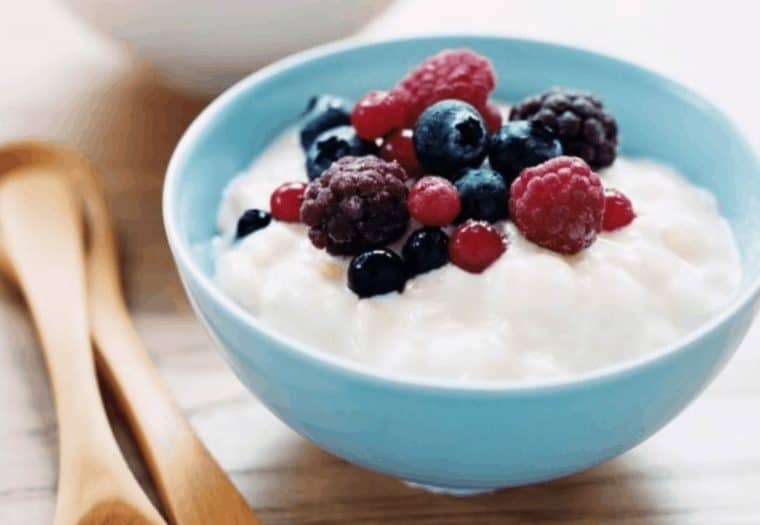
The cheese is packed with protein, vitamin B, calcium, and phosphorus. It satiety level is similar to that of eggs and is low in calories. It’s a great substitute to heavier cheeses in pies and other quiche like dishes. These characteristics make cottage cheese the weight loss friendly food it is.
Radishes
Bunnies love it for a reason. It might not be the most popular vegetables with kids and many adults but trust us when we say it is very underestimated and forgotten. First cultivated in China, radish crops spread into Europe in the 14th century and had reached Massachusetts by 1629.With their spicy flavor and crunchy texture, I dare you to find me preparing a sandwich without it.

You can use it in salads, soups, main dishes and as a refreshing snack. 1 cup has only 19 calories, That’s a lot of flavor for no calories. Plus they have lots of vitamin C. and with their special red-pink color they make a fantastic edible garnish on any plate or bowl.
Tuna
Tuna is a low-calorie, high-protein food. No wonder the Japanese swear by it and it is sold there for ridiculous prices. Just visit the fish markets in Tokyo or Sri-Lanka to get an idea of its popularity. It is lean fish, meaning it is low in fat. Better eat the fresh ones instead of canned tuna whenever possible.
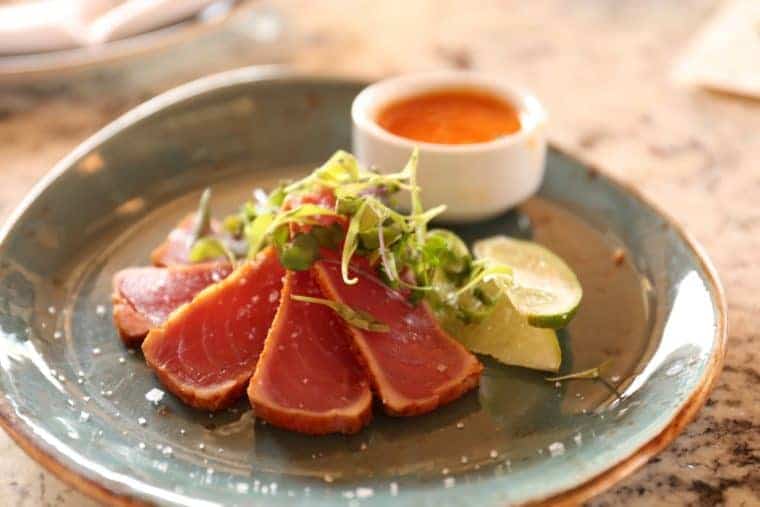
Tuna is popular among bodybuilders and fitness models who are on a strict regime and need their body to recuperate fast. As it is a great way to increase protein intake while keeping total calories and fat low. If you are trying to emphasize protein intake, make sure to choose tuna canned in water, not oil. Especially after your workouts.
Cucumber
A fruit that is mostly made up of water, cucumbers only contain 16 calories per serving. Just like celery, in 100 grams of cucumber, about 95 grams of that is water. This means eating a cucumber will help reduce fluid retention and bloating. 100 grams or 3.5 ounces of cucumber is about 15 kilocalories and 16% of daily value of vitamin K.

The peel and seeds provide both fiber and a form of vitamin A known as beta-carotene, which is known to be good for your eyes. And it is tasty! While some think it’s the less attractive sibling of the tomato, the cucumber has a personality of its own. Try cutting it into noodles like strips and eat with a peanut butter-based sauce. Yummy!!
Mushrooms
There are many mysteries about mushrooms and what they can do for us but one thing is clear. Eat them as much as you can. For start they are made up of 90% water (as you can see when you fry it in a pan). There are so many ways to eat mushrooms; from raw in a salad, in a pie, fry with rice or noodles, and do not get me started with soups.

“Mushrooms are loaded with vitamins and minerals and have very few calories, so they make the perfect diet food”. Also, mushrooms are known to be just as filling as beef. Nutritionists advise to eat them raw, as this delivers the most nutrients for the least calories. There are 77 calories in 1 cup of Cooked Mushrooms. Most of the mushrooms in the world are grown in China.
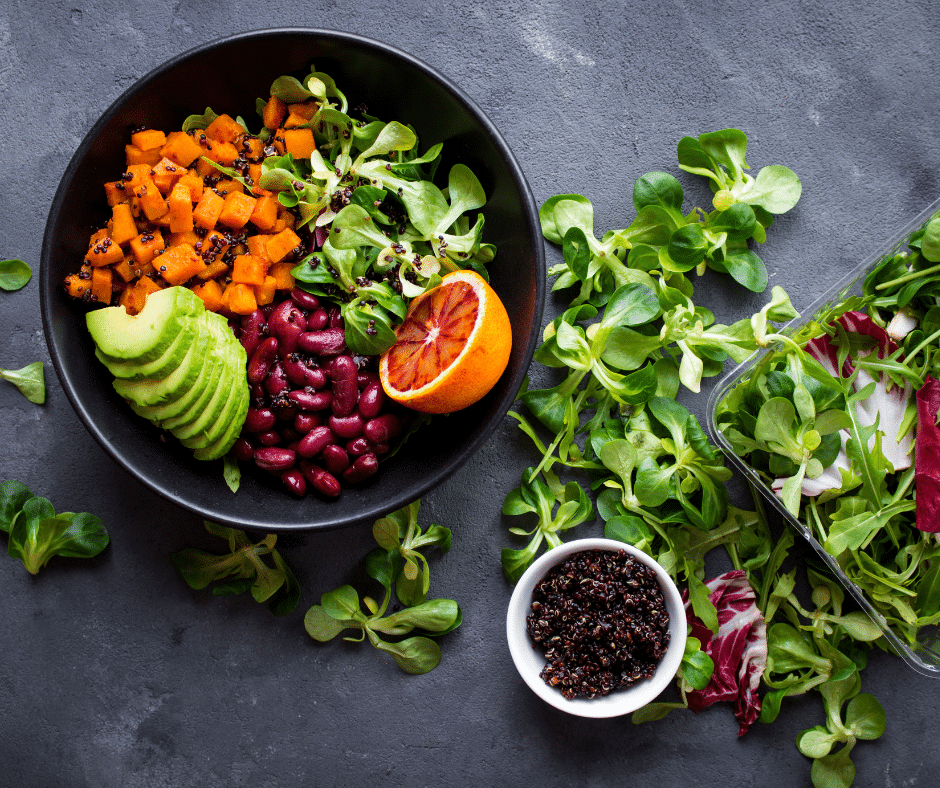
The Various Types of Salad for Meals

Ways to Use Social Media to Boost Workout Motivation

The Spiciest Dishes From Around the World
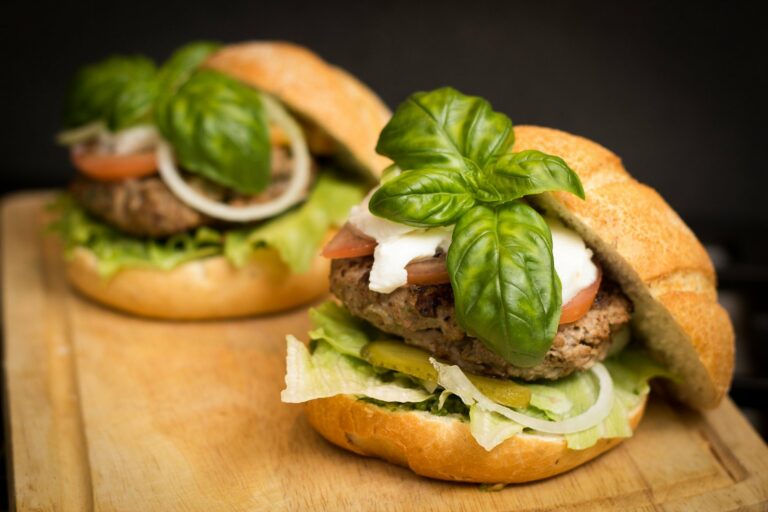
Where to Find the Best Burgers in the World

The Pros & Cons of Running with a Face Mask On
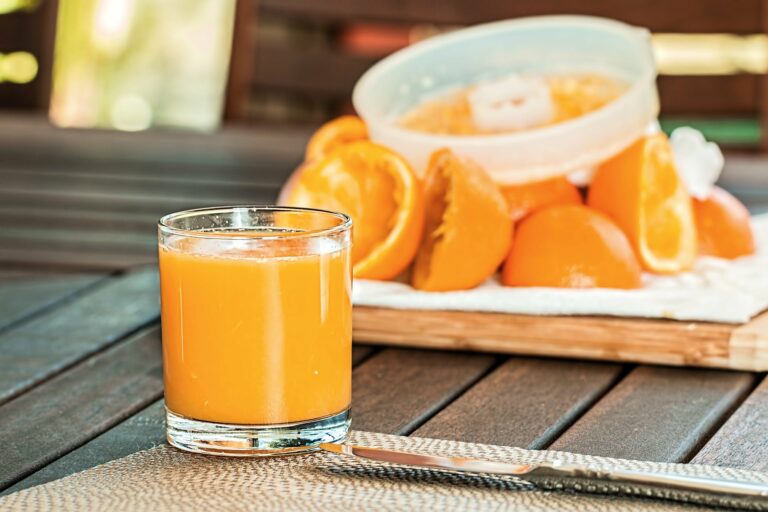
The Most Popular Drinks around the World

The Many Health Benefits Of Yoga
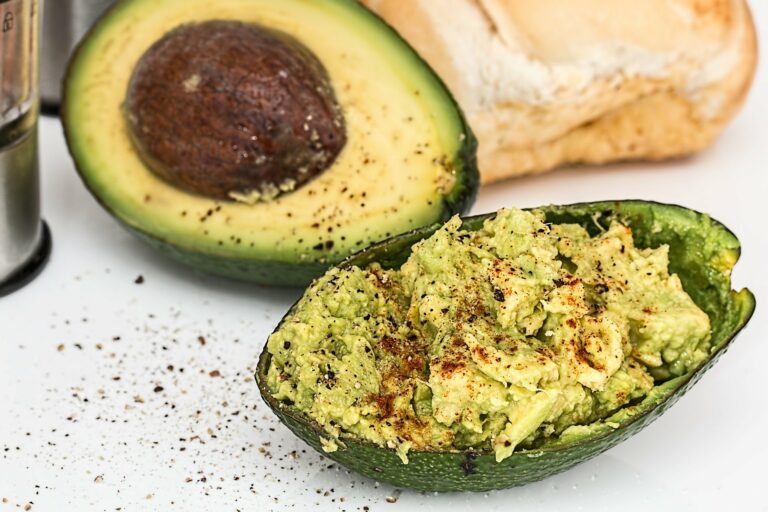
Healthy High Fat Foods that Keep you Full And Satisfied

Pilates Tips to Help You Perfect Your Home Workout
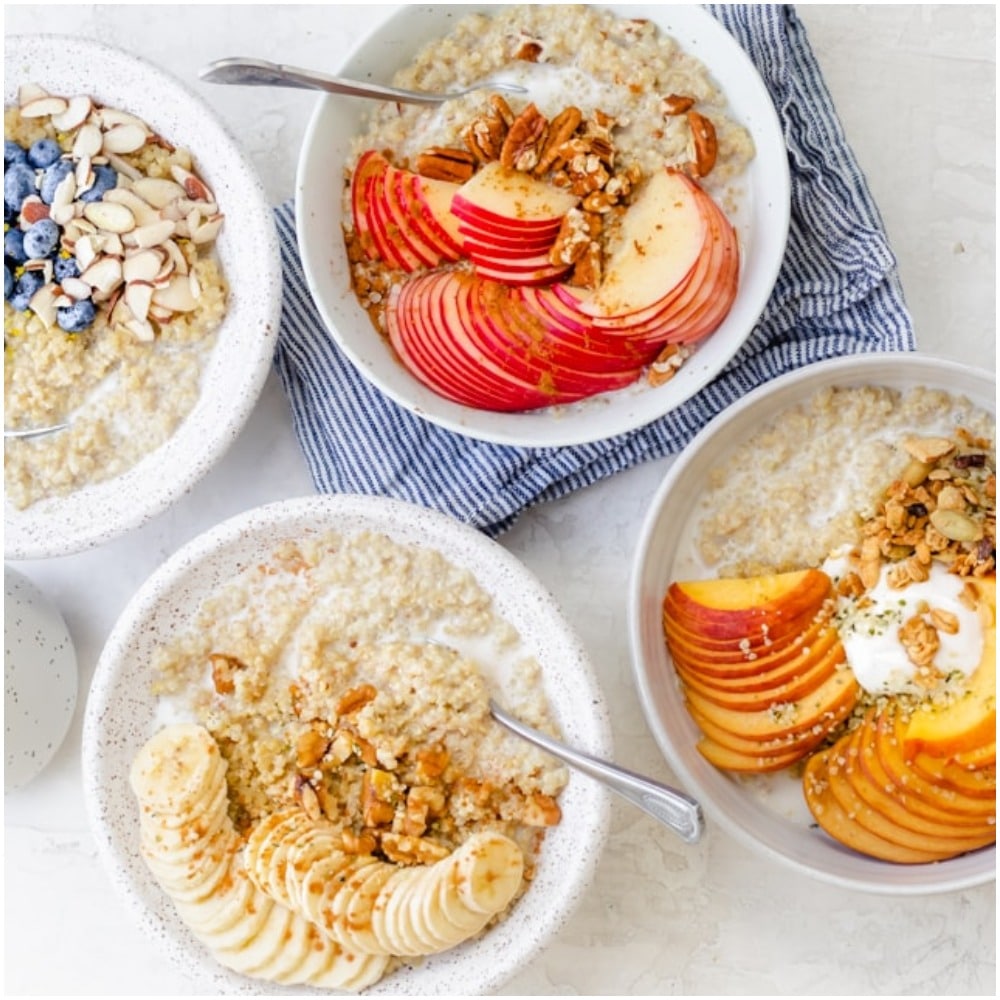
The Best Foods to Eat Before a Workout
